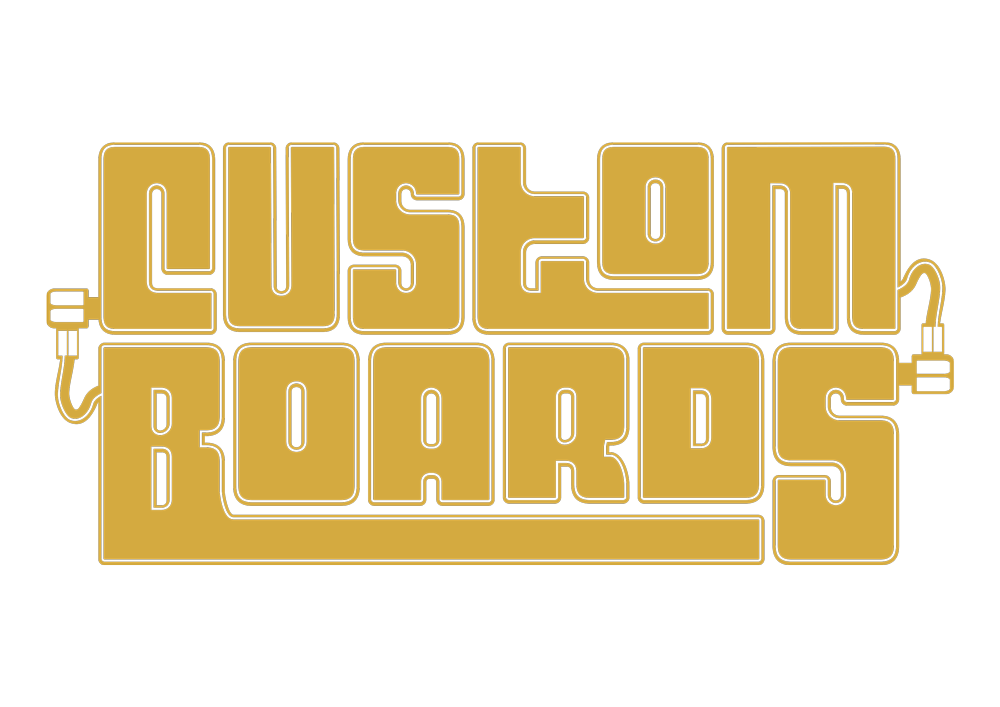Learn to take advantage of multiple gain stages (Updated 26.3.2024)
If the amplifier doesn't have an effects loop or using it is inconvenient, but there's still a need for it, don't worry! A similar setup can be constructed using gain pedals, so that you get your delay/reverb -effects after the heavier distortions, allowing them to sound as you require.
High-gain preamp functions like a distortion pedal
The easiest way to understand and change your own gain stages is to think of your amp’s preamp as an overdrive or distortion effect pedal. High gain (hard clipping) tube preamp distortion looks virtually the same in an audio analyzer as the transistor- and/or diode-based distortion produced by a pedal.

If a high-gain amp’s preamp can be compared to a distortion pedal then a mildly overdriving (soft clipping) tube amp preamp could be seen as an overdrive pedal.

Using a transparent transistor-based preamp completely clean is close to plugging your guitar straight into the amp’s power amplifier at line level, even though there’s a certain amount of preamp boosting and equalization.
Modern high gain ideal
For the dullest and most one-dimensional sound possible, you can connect a guitar with hot pickups straight into a high-gain amp’s preamp with the gain turned to full. What you get is that your amplifier's first 12AX7 tube will be overly saturated. As a result sound is compressed to the point that there are practically no way of controlling anything with your playing dynamics.
Many young and inexperienced players take this route, because it is very easy to play with this kind of sound. Simply hit any note and it will come out of the amp in an easy-to-predict way. You could argue that this type of sound is ideal for metal music, but in reality it is also something of a dead end road, as there are many more ways to sculpt interesting, multi-faceted overdrive tones.
Clean and gain amps
If an amplifier has originally been designed with the clean tone as the main focus, chances are its overdrive channel does not inspire you as much. A good example could be many of Fender’s various designs over the decades.

The reverse can be said about many high-gain amps, who often tend to include somewhat unispiring clean channels. This category includes some Marshalls, but also the newer Mesa Boogie models, Peavey’s 5150, and many others. The amp designer has put all his energy and knowledge into designing the crunching high gain channel, with the clean channel often added as a mere afterthought, because you “have to have one”.

Using your clean channel with distortion pedal
It is a hard task to design a great-sounding high-gain channel, which is why you can also find so many bad amps, aside from the classics named above. I have encountered many different modern amps, whose high-gain sounds were almost self-oscillating and which sounded like a table saw at full tilt.

An easy way for altering your sound would be to use the high-gain amp’s clean channel with a distortion pedal. Depending on how well your amp has been designed the resulting sound may even be better than using the lead channel on its own.

Many professional session players prioritize their clean sounds so they use a great-sounding clean amplifier as the foundation of their sound. This is also the reason why many guitarists have such large pedalboards. If your clean sound is important to you, and you have chosen your amplifier accordingly, adding different shades of gain and distortion to your signal is very easy. At least it’s much easier than trying to find a healthy-sounding clean tone and various dynamic overdrive stages using a substandard multi-channel amp.
Find your amp’s most natural sound
In many affordable high-gain amps the moderately-gained second channel (often labelled Crunch or OD1) sounds much more organic than the high-gain lead channel. If you combine this channel with the signal coming from an overdrive pedal, you will get the amount of gain you’ve been looking for, but with a much more desirable tone than you’d get from just the amplifiers high-gain channel on its own.

If you worry that your clean sound is not clean enough, remember that when you’re part of the band, clean sound doesn’t necessarily have to be as clean as you would imagine whenever you’re playing by yourself. In a live situation minimal tube saturation will disappear beneath the drummer’s cymbals and the reflections of the venue, but this type of clean will sound much livelier and contain more upper harmonics, which in turn will make the guitar tone stand out better.
Build your own "effects loop"
Should your guitar amp feature several different channels and if it's high-gain tones leave you a bit wanting, you can try the following:
- Select the amp’s best-sounding, most naturally dynamic and interactive channel to build your sound on. Even if you may need to boost your signal for more gain, or use an EQ pedal – or your guitar’s volume – for cleaning your sound, you will have chosen the best foundation for your tone.
- Drop your amplifier preamp gain to such a level that it allows you clean up your sound using your picking hand touch. Attacking the strings with your plectrum results in your amp overdriving, but playing softly will clean up your tone almost completely. You can try to use your neck pickup, a less powerful humbucker or even a single-coil pickup, which would leave a lot more room for your right hand dynamics.
- Use a natural-sounding overdrive pedal that reacts desirably to your playing dynamics. Add a light amount of crunch from that chosen pedal.
- Place your modulation- and delay- and reverb-pedals next in the chain.
- Pump the tone up some more with an another overdrive pedal, or alternatively a booster, right in front of your slightly crunchy amp.
This type of setup mimics the behaviour of an FX loop but gives you way more alternatives to controlling your sound. You can adjust the behaviour of your modulation- and delay- and reverb-effects placed between the gain stages in three different ways:
- The first overdrive pedal gives the other pedals later in the chain a light push. It creates more upper harmonics to your sound, which tickles the pedals and wakes them up. This is your 1st gain stage and it reacts directly with your guitar pickups and your playing dynamics.
- The second overdrive pedal is at the end of the chain, so from the perspective of the pedals before it, it behaves like the preamp of the amplifier. If you look it from the amp’s point of view, this 2nd gain stage functions like an additional preamp tube. Your amp’s first preamp valve has now effectively been moved to a 3rd gain stage in your signal chain.
- Now add a bit of amplifier preamp gain while listening how your effects behave. If they start to get muddy, you can add more gain from the 1st gain stage and back it up a little from the 2nd or 3rd gain stage.
 This way you have added two additional gain stages in front of your amp. If we remember that a high-gain preamp often contains up to five internal gain stages, viewing the second overdrive pedal as part of the amp’s preamp will bring you closer to the basic principle behind a high-gain amplifier’s circuit, but with external add-ons.
This way you have added two additional gain stages in front of your amp. If we remember that a high-gain preamp often contains up to five internal gain stages, viewing the second overdrive pedal as part of the amp’s preamp will bring you closer to the basic principle behind a high-gain amplifier’s circuit, but with external add-ons.

Summary
Using this method moves the 1st gain stage closer to the guitar so that you can place pedals between your gain stages. A signal path like this leaves plenty of scope for playing dynamics and the use of the guitar’s volume control. Your effects will have a clearer sound and offer more possibilties for adjustment.
And if you have chosen your gear well, you could take this analogy further and try to build your gain even more gradually. As a result you could achieve a little power amp warmth, output transformer saturation and a bit of speaker distortion. The resulting sounds are often significantly juicier, more open and more dynamic than when you’re relying solely on your amplifiers preamp for your distorted sound.


